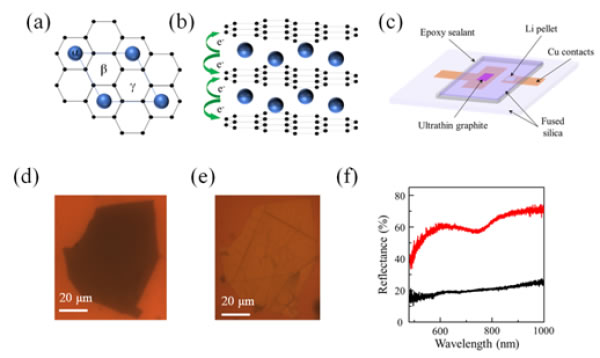The two-dimensional material represented by graphene (Graphene) is a brand-new material material form discovered in the early 21st century. Compared with traditional three-dimensional materials, graphene has excellent photoelectric properties such as ultra-high carrier mobility, ultra-high thermal conductivity, and ultra-wide response band. In terms of microelectronic devices, optoelectronic sensing, integrated photonics, etc. Has broad application prospects. In recent years, the nonlinear optical properties of graphene have become the frontier and hotspot of scientific research, and are considered to be one of the most promising nonlinear optical materials in the future.
The second harmonic (frequency-doubling effect) is a second-order nonlinear optical effect, which requires the detected material to meet the requirements of the central inversion symmetry breaking, and the second harmonic cannot be observed for the center inversion symmetric structure. of. The study of the second harmonic signal of materials is an important technical means to obtain information on the microscopic properties of atoms and molecules, and it is helpful to understand the process of the interaction between light and matter. Graphene has a centrally inverted symmetric structure and does not have a second harmonic signal. How to induce and realize the regulation of its frequency-doubling effect is a technical difficulty.
Inspired by the working principle of lithium batteries, the Institute of Frontier Science and Technology of the Institute of Optoelectronic Technology of the Chinese Academy of Sciences and researchers from the National University of Singapore and the National University of Defense Technology have built graphene intercalation devices similar to lithium ion batteries. On the premise of maintaining the two-dimensional structure of graphene, lithium metal is inserted between the graphene van der Waals layers to form a lithium graphene intercalation material with a supramolecular structure. The embedding of lithium metal can precisely control the transition process between electron bands, in-band and electron-phonon interaction in graphene, and then realize the controllable regulation of graphene second harmonic characteristics. The researchers adjusted the number of lithium ions between the graphene layers to achieve controllable regulation of the second harmonic signal of graphene. Compared with traditional electric field control, surface doping and other methods, intercalation control has the advantages of a large control range, controllable and reversible control process, and the device state can be maintained without charge. This study reveals the excellent nonlinear optical properties of lithium graphene intercalation materials. As a new tunable optical frequency doubling material, it will play an important role in the development of advanced nanophotonic devices. During the study, the researchers demonstrated the preparation of samples in the order of centimeters.
The related research results are published in ACS Applied Materials & Interface under the title of Inversion symmetry breaking in lithium intercalated graphitic materials.

Characterization of lithium graphene intercalation materials. (A, b) Schematic diagram of lithium graphene intercalation materials; (c) Schematic diagram of lithium graphene intercalation materials and devices; (d, e) Optical photographs before and after graphene intercalation; (f) Before graphene intercalation (black Curve) after (red curve) optical reflectance spectrum

The second harmonic signal of lithium graphene intercalation materials under different intercalation states. The generation of the second harmonic signal indicates that the lithium intercalated graphene material has a reverse symmetry breaking phenomenon, which is expected to be used to correct the theoretical model of the lithium intercalated graphene P6/mmm symmetry structure. For understanding the graphene intercalated material The novel physical properties, such as superconductivity and charge density waves, are also of great significance.

Preparation of centimeter-scale graphene intercalation materials. (A) Optical photographs before, after and deintercalation of centimeter-scale graphene intercalation; (d) Quadratic before (black curve), after (red curve) and deintercalation (blue curve) of centimeter-scale graphene intercalation Harmonic signal
Aluminum Extruded Profile,Aluminum Window Frame Profiles,Aluminum Window Frame Extrusions,Extrusion Aluminum Profile
Guangdong Jihua Aluminium Co., LTD , https://www.gdaaluminiumprofile.com